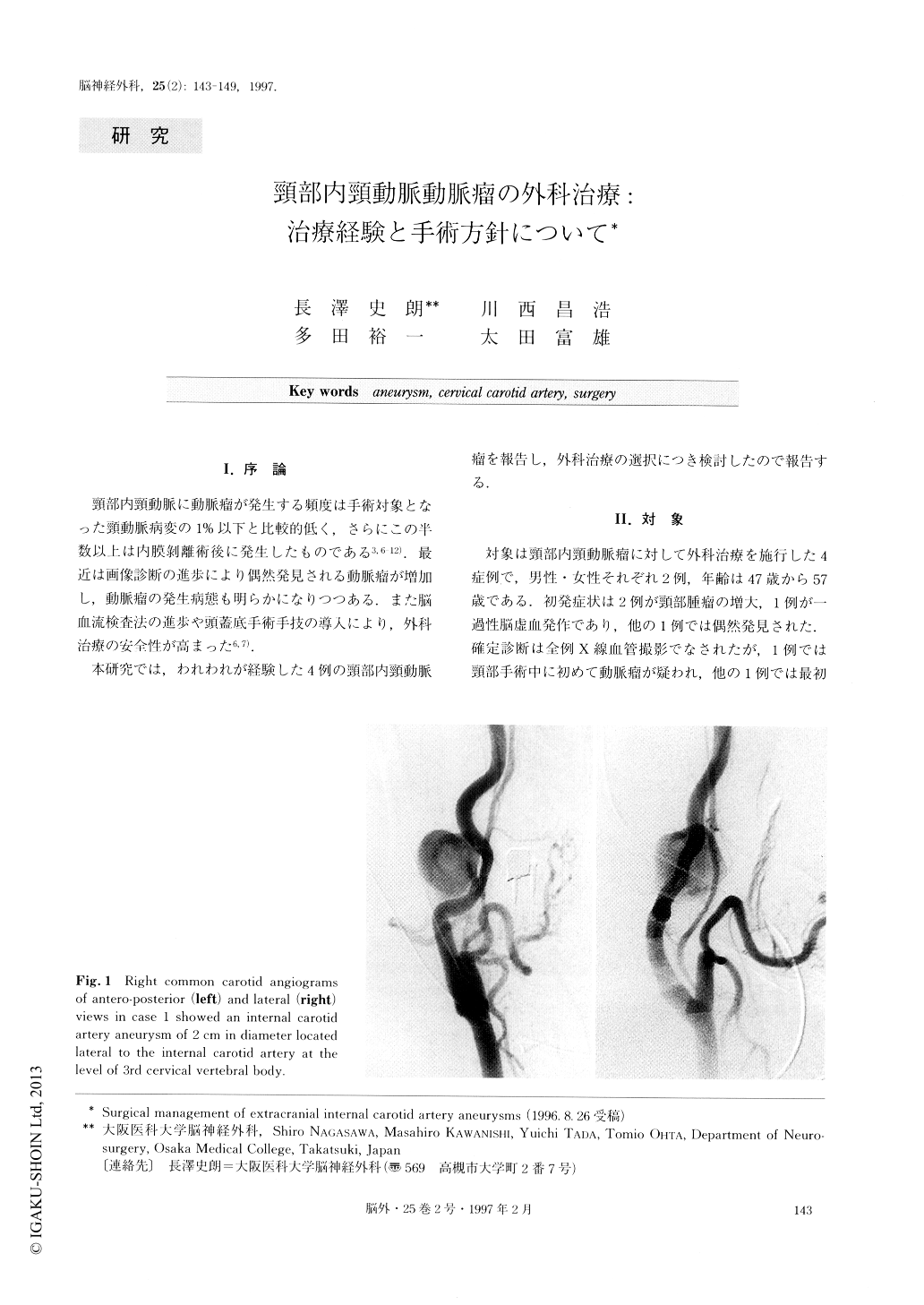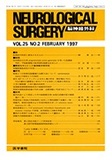Japanese
English
- 有料閲覧
- Abstract 文献概要
- 1ページ目 Look Inside
I.序論
頸部内頸動脈に動脈瘤が発生する頻度は手術対象となった頸動脈病変の1%以下と比較的低く,さらにこの半数以上は内膜剥離術後に発生したものである3,6-12).最近は画像診断の進歩により偶然発見される動脈瘤が増加し,動脈瘤の発生病態も明らかになりつつある.また脳血流検査法の進歩や頭蓋底手術手技の導入により,外科治療の安全性が高まった6,7).
本研究では,われわれが経験した4例の頸部内頸動脈瘤を報告し,外科治療の選択につき検討したので報告する.
Aneurysms of the extracranial internal carotid artery are rare but may present as a mass, with ischemic symptoms, or with fatal hemorrhage. We operated on aneurysms in four patients, two males and two females, whose ages ranged from 47 to 57 years.
While a lot of etiological factors for the aneurysms have been known to include trauma, vascular dysplasia, infection or surgery using patch graft for carotid endar-terectomy, three aneurysms in our series were atherosc-lerotic and one was spontaneously dissecting. One pa-tient had focal neurological deficit due to embolism, two presented with a growing cervical mass, and one was symptom-free. The aneurysm was located proximal below the angle of the mandible in three patients and was distal above the angle in one. All patients were found able to tolerate test occlusion of the internal carotid before surgery. The aneurysm was trapped in one case (case 1) and was encased by vascular prosthe-sis in another (case 4). In the other two cases, arterial reconstruction after aneurysmal resection was carried out. In one case out of the two, the aneurysm was lo-cated at the level of 2nd cervical vertebral body (case 2). Vertical mandibular osteotomy was performed pos-teriorly to the exit of the inferior alveolar nerve from the bone, which gave a good view of the upper third of the internal carotid artery and facilitated primary end-to-end anastomosis. In the other case in which there was a dilated distal carotid artery and multiple aneu-rysms at the basilar and bilateral vertebral arteries (case 3), an extracranial-intracranial (EC-IC) saphe-nous vein bypass was inserted so as not to increase the hemodynamic stress in the posterior circulation. Except for a transient lower cranial nerve palsy in one case (case 2), there were no incidences of morbidity or death.
Magnetic resonance angiography (MRA), Doppler ultrasonography or three-dimensional CT angiography (3-D-CT-A) was found useful in evaluating the change of aneurysmal size. It is essential in surgery for an in-ternal carotid artery aneurysm to choose an appropriate approach characterized by its size and location. It may be important in cases with associated vascular lesions to estimate the potential hemodynamic change that might be induced by aneurysmal surgery.

Copyright © 1997, Igaku-Shoin Ltd. All rights reserved.


